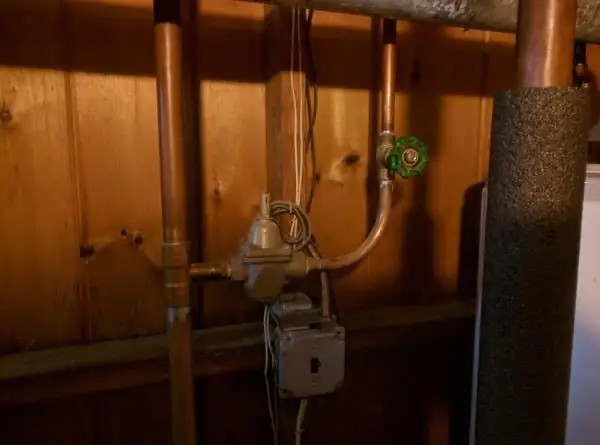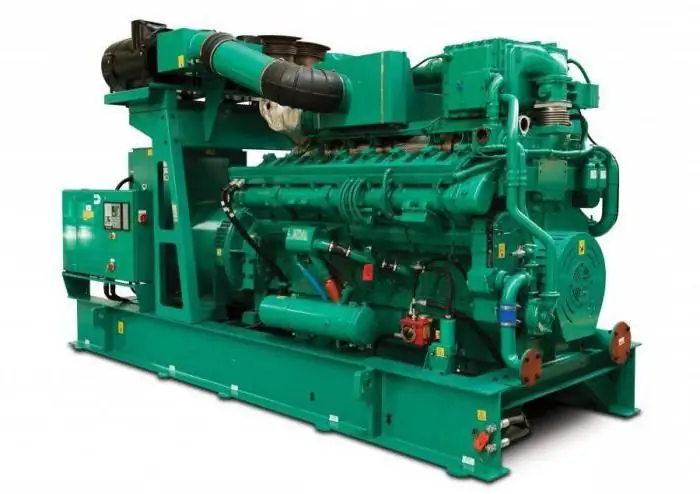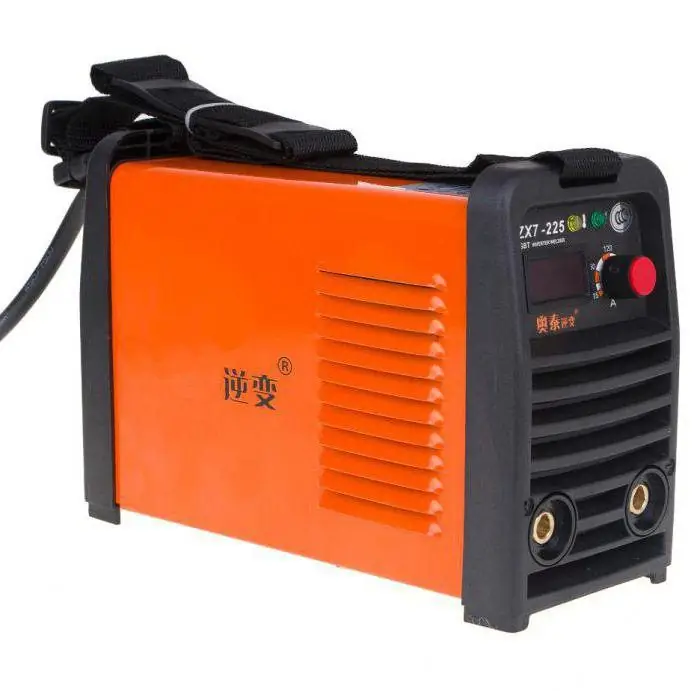2026 Author: Howard Calhoun | [email protected]. Last modified: 2025-01-24 13:10:41
It's worth starting with the fact that the choice of AC or DC for welding depends on the coating of the electrode itself, as well as on the brand of metal with which you have to work. In other words, using a welding converter to get a constant current, and therefore a more stable arc to work with, is not always possible.
What is a converter?
The welding converter is a combination of several devices. It uses a combination of an AC electric motor and a special DC welding machine. The energy conversion process is as follows. The electrical energy coming from the AC network acts on the electric motor, causing the shaft to rotate, creating mechanical energy at the expense of electrical energy. This is the first part of the transformation. The second part of the work of the welding converter is that during the rotation of the generator shaft, the generated mechanical energy will becreate a constant electric current.

However, it should be noted right away that the use of such devices is not very popular, since their efficiency is low. In addition, the motor has rotating parts, which makes it not very convenient to use.
The principle of operation of the device
It can be noted that the welding converter is a specific kind of ordinary welding machine. Briefly speaking about the design of this equipment, it is approximately the following. There are two main parts - this is an electric motor, which is most often asynchronous, as well as a DC generator. The peculiarity is that both of these devices are combined in one case. It is also important to pay attention to the fact that the circuit has a collector. Since the operation of the generator is based on electromagnetic induction, it will produce alternating current, which will be converted to direct current using a collector.

If we talk about the principle of operation of the welding converter, then do not confuse it with devices such as a rectifier or inverter. The end result for all three devices is the same, but the essence of their work is very different. The biggest difference is that a longer conversion chain is carried out in the converter. Since alternating current is first converted into mechanical energy and only then into direct current.
Welding devicetransducer
You can consider the device of this device using the example of a single-station converter. Such models consist of a conventional drive asynchronous motor and a welding generator combined in one housing.

Here it is worth noting that such equipment is intended for outdoor use. However, there they must be placed either in specially designated places - machine rooms, or under sheds. This is necessary to protect electrical equipment from precipitation.
Internal arrangement of the unit
If you go into the details of the device and design, as well as the principles of operation of the welding converter, then it all looks like this.
Since the device heats up during operation, a fan is mounted on the shaft between the generator and the electric motor to cool the converter. The electromagnetic parts of the generator, that is, its poles and armature, are made of thin sheets of steel of an electrical grade. On the magnets of the poles are elements such as coils with windings. The armature, in turn, has longitudinal grooves into which the insulated winding is placed. The ends of this winding are soldered to the collector plates. This device also has a ballast and an ammeter. Both devices are in the box.

Used Models
Currently, welding converters with a rated welding current of 315 A are used.the purpose of these units is DC power supply of one welding post. It can also be used to power manual arc welding, surfacing and metal cutting with stick electrodes. In converters of this kind, generators of the GSO-300M and GSO-300 types are used. Their device is a four-pole DC collector machine with self-excitation. The difference between these two models from each other lies only in the fact that they have a different frequency of rotation of the generator shaft. This is with regard to the welding converter 315. 500 A is the second rated current, which is also used for operation. However, here it is already necessary to connect a more powerful converter, for example, the PD-502 model, to work. The essential difference between this converter model and the GSO is that it has an independent excitation. The point here is that to power the PD-502, an alternating three-phase current is used, which first passes through an inductive-capacitive voltage converter. Simultaneously with the power function, it also acts as a stabilizer for this model of the unit.

However, it is important to understand that the main purpose of the welding converter is to convert the energy of the electrical type of variable nature into electrical energy of a constant nature.
Types of transducers
There are two main types of transducer - stationary and mobile. If we talk about stationary types, then most often these are small welding cabins or posts designed for workwith small quantities. The welding converters installed here are not very powerful.
Mobile, in turn, are designed mainly to work with large volumes. They are often used to weld water pipes, oil pipelines, metal structures, etc.

It is important to add something else about the principle of operation of this device. As mentioned earlier - it converts alternating current to direct current using the transition to mechanical energy. However, there are some devices that allow you to adjust the amount of output DC. The adjustment process is carried out using devices such as ballast rheostats. The principle of operation is quite simple - the higher the resistance value, the lower the output DC power and vice versa.
Operating Rules
When using a welding transducer, some rules must be followed. For example, under no circumstances should the terminals of the device be closed, since the voltage on them is 380/220 V. Another important rule is that the converter housing must always be reliably grounded. People working directly with such equipment must be protected by gloves and masks.
Recommended:
Electric locomotive 2ES6: history of creation, description with photo, main characteristics, principle of operation, features of operation and repair

Today, communication between different cities, passenger transportation, delivery of goods is carried out in a variety of ways. One of these ways was the railroad. Electric locomotive 2ES6 is one of the types of transport that is currently actively used
The main consumable for welding - welding wire

Welding wire is used in various welding operations, it is the main consumable material that acts as an electrode. Welding operations require extensive professional knowledge, a responsible approach to the choice of raw materials. For welding structures, it is unacceptable to use random wire of incomprehensible marking and unknown composition
Low pressure heaters: definition, principle of operation, technical characteristics, classification, design, operation features, application in industry

Low pressure heaters (LPH) are currently used quite actively. There are two main types that are produced by different assembly plants. Naturally, they also differ in their performance characteristics
Gas piston power plant: the principle of operation. Operation and maintenance of gas piston power plants

Gas piston power plant is used as a main or backup source of energy. The device requires access to any type of combustible gas to operate. Many GPES models can additionally generate heat for heating and cold for ventilation systems, warehouses, industrial facilities
Laser welding: principle of operation and benefits

Metals can be connected in different ways. The most reliable and progressive way to obtain permanent joints of various products is laser welding. Thanks to this technology, it is possible not only to achieve great precision and accuracy, but also to join materials with a high melting point or high thermal conductivity. The short, controllable melting period and the small amount of melt make it possible to weld even parts for which conventional methods are not at all suitable

